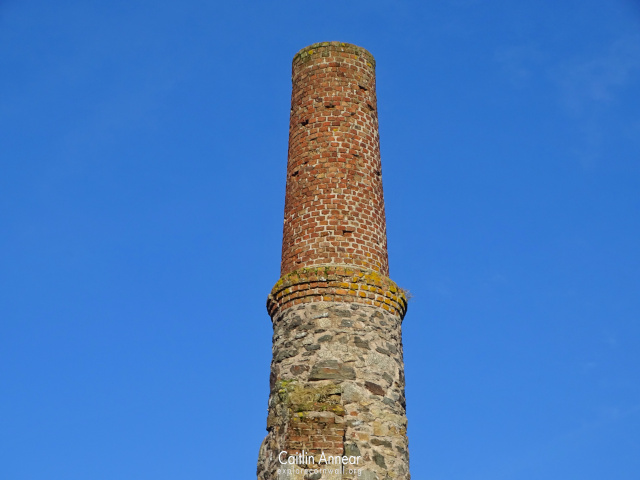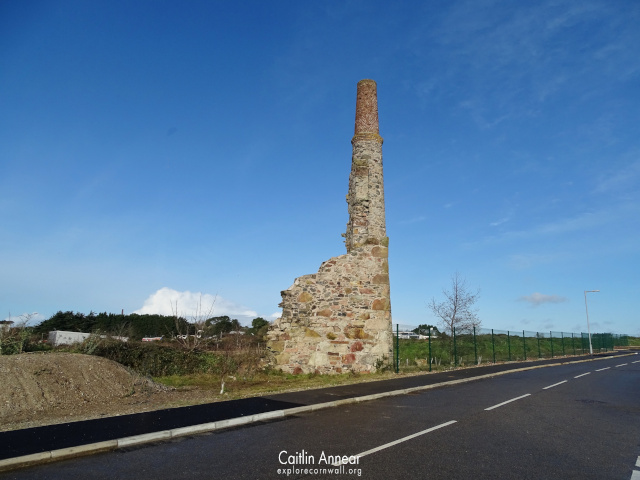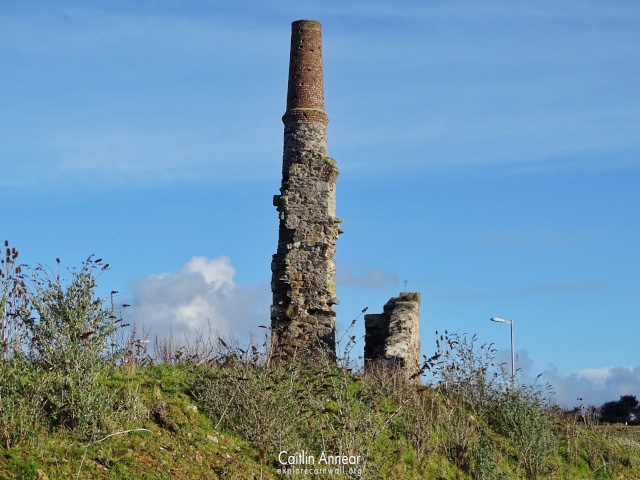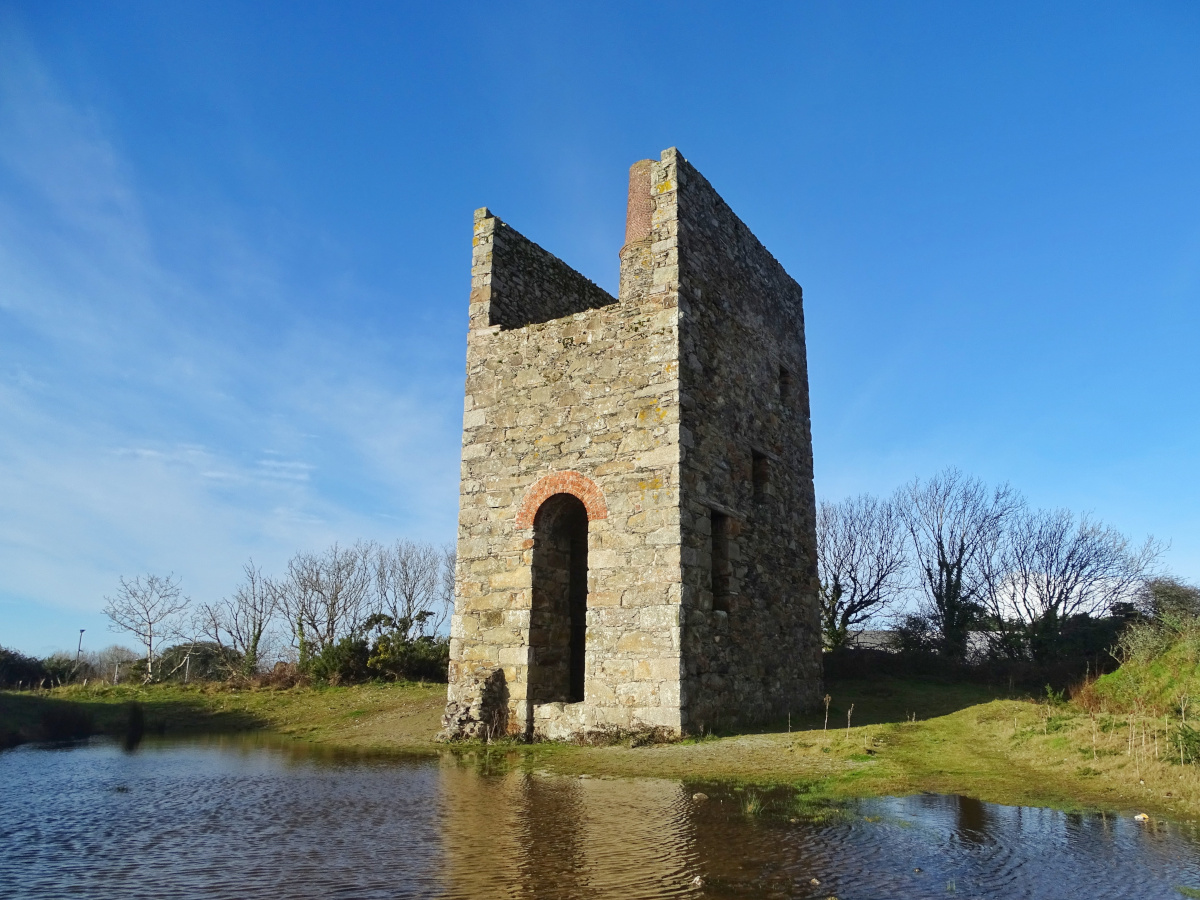Not far from the rail line that runs from Redruth to Truro is the remains of two engine houses belonging to Hallenbeagle Mine.

Hallenbeagle Mine was at work by 1835, producing over 30,ooo tons (30,481,407 kg) of copper by 1846. During the first few years of the 1860’s it was reworked as part of Great Wheal Busy along with several other neighbouring mines, but separated again in 1864. Just prior to the 1870’s, it was again mined with another mine, this time East Downs.
From 1843, one of its shafts was reopened in search of tungsten after some had been found in some nearby dumps. However, the shafts had been filled with sawdust which proved difficult to remove; once the miners finally got to the 140ft level, they cleared 230ft if ground, but found no tungsten.

Reed’s (36 fathoms/66m), King’s (74 fathoms/135m), Engine (107 fathoms/196m), Stone’s (56 fathoms/102m), Eastern (36 fathoms/66m) and Veffrey’s.
North, Wheal Rose Main, South, Reed’s and Oat’s.
1835-46
30,580 tons (31,070,714 kg) 6% copper
1864-67
3,200 tons (3,251,350 kg) copper

There are two engine houses, the most intact being the 60″ pumping engine built in 1864 by Harvey & Co for Reed’s shaft. It was later sold to Perran Wheal Virgin mine in 1870.
Little remains of the smaller 22″ whim engine, which also worked from Reed’s shaft. This engine was moved to Dooneen Mine in Ireland in 1872.
Both engine houses are in the centre of an industrial estate and are free to view.
No official parking, just park sensibly on the estate.
Dines, H. G. (1956). The metalliferous mining regions of south-west England. British Geological Survey.
Nance, Damian., & Brown, K. (2014). A complete guide to the engine houses of West Cornwall. Lightmoor Press.
